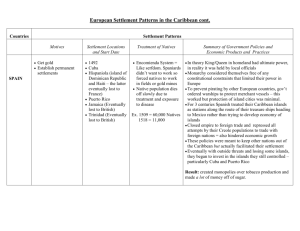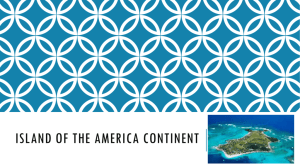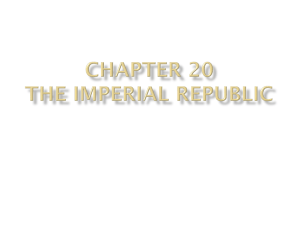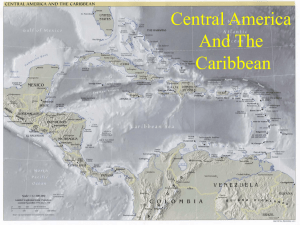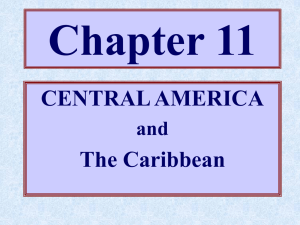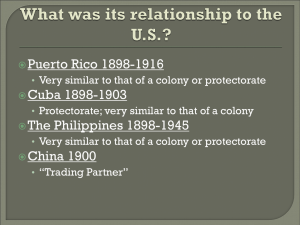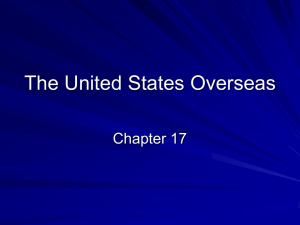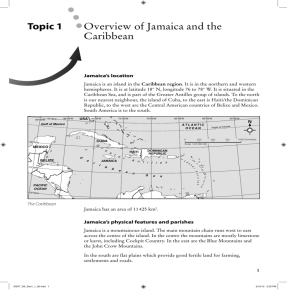THE CARIBBEAN (aka THE WEST INDIES) The region (named after
advertisement
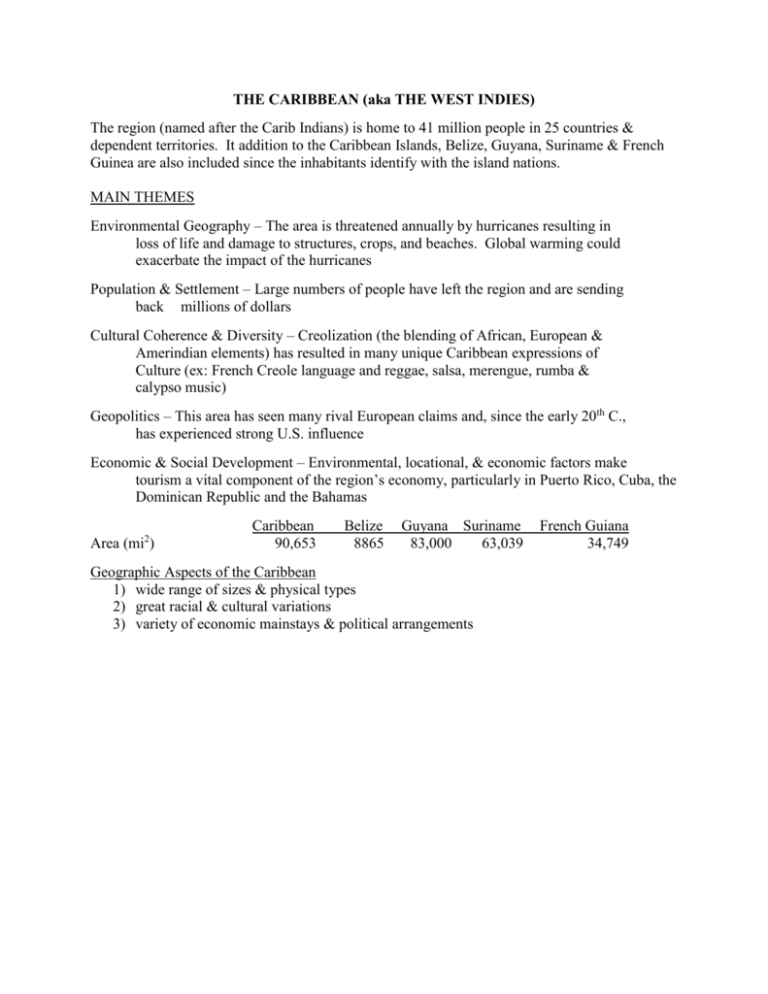
THE CARIBBEAN (aka THE WEST INDIES) The region (named after the Carib Indians) is home to 41 million people in 25 countries & dependent territories. It addition to the Caribbean Islands, Belize, Guyana, Suriname & French Guinea are also included since the inhabitants identify with the island nations. MAIN THEMES Environmental Geography – The area is threatened annually by hurricanes resulting in loss of life and damage to structures, crops, and beaches. Global warming could exacerbate the impact of the hurricanes Population & Settlement – Large numbers of people have left the region and are sending back millions of dollars Cultural Coherence & Diversity – Creolization (the blending of African, European & Amerindian elements) has resulted in many unique Caribbean expressions of Culture (ex: French Creole language and reggae, salsa, merengue, rumba & calypso music) Geopolitics – This area has seen many rival European claims and, since the early 20th C., has experienced strong U.S. influence Economic & Social Development – Environmental, locational, & economic factors make tourism a vital component of the region’s economy, particularly in Puerto Rico, Cuba, the Dominican Republic and the Bahamas 2 Area (mi ) Caribbean 90,653 Belize 8865 Guyana Suriname 83,000 63,039 Geographic Aspects of the Caribbean 1) wide range of sizes & physical types 2) great racial & cultural variations 3) variety of economic mainstays & political arrangements French Guiana 34,749 PHYSICAL GEOGRAPHY 1) Greater Antilles: a) Cuba – primarily lowland with low mts on the eastern & western ends b) Hispaniola – steeply mountainous or hilly c) Jamaica – “ “ “ d) Puerto Rico – “ “ “ 2) Lesser Antilles – form a double arc of smaller islands stretching from the Virgin Islands to Trinidad: a) low & flat limestone islands rimmed by coral reefs (e.g. Antigua, Barbados) b) volcanic islands (e.g. Virgin Islands, leeward Islands, Windward Islands) 3) Netherlands Antilles (Aruba, Bonaire & Curaçao) 4) Other Island Groups (ex: Cayman Islands, the Turks& Caicos, the Bahamas) 5) Rimland a) Belize in Central America b) Guianas in South America i) Guyana ii) Suriname iii) French Guiana [ c) Caribbean coast of Central & South America] CLIMATE Climate is warm year round with abundant rainfall (tropical wet climate). Much of the area receives > 80”/yr (200 cm/yr) of rainfall. Each year, several hurricanes form. ENVIRONMENTAL GEOGRAPHY 1) Deforestation due to lumber for housing, fences & ships and for sugarcane (Haiti mostly gone, Cuba 80% gone, Puerto Rico 75%, Jamaica & the Dominican Republic 70%). This resulted in soil erosion & the extinction of numerous plants & animals. The rimland states however still contain significant amounts of forests 3) Marine resource conservation, especially coral reefs, is an important issue (Belize has the 2nd largest barrier reef in the world) 4) Water contamination is a localized issue 5) Natural Hazards a) hurricanes e) volcanoes – due to the N. & S. American plates subducting under the Caribbean plate POPULATION & SETTLEMENT The majority of the region’s population live on the islands. 85% live on Cuba, Jamaica, Hispaniola (Haiti & the Dominican Republic), and Puerto Rico. (These four islands also have most of the arable lands). The population density on the islands is quite high (Barbados is the highest – 1542 people/mi2, 586/km2; followed by Puerto Rico – 1128/mi2, 430/km2) & increasingly urban. The rimland states are lightly populated. Migration 1) by the mid-16th C., most of the region had been depopulated, so there was a continual importation of African slaves to support the sugar plantations 2) by mid-19th C., most colonial governments had begun to free their slaves, so indentured laborers from S & SE Asia were brought in 3) migration within the Caribbean following the harvesting of sugar 4) starting in 1950s: emigration to other Caribbean islands, N. America & Europe due to limited economic opportunities (ex: 1980s, ~10% of Jamaica’s population immigrated to N. America, 200,000 to U.S. & 35,000 to Canada) 5) starting in 1950s: Puerto Ricans to 6) starting in 1960s: Cubans to Miami 7) starting in 1960s: rural-to-urban migration CULTURAL COHERENCE & DIVERSITY Linguistic, religious & ethnic differences abound throughout the region so any cultural coherence is based on common historical & social processes. Language Spanish – 24 million (official language in Cuba, Dominican Republic & Puerto Rico) French – 8 million English – 6 million Dutch – 0.5 million Many of the languages have become creolized Religion Afro-religious traditions have evolved into unique forms such as Voodoo (Haiti), Santería (Cuba) & Obeah (Jamaica)
